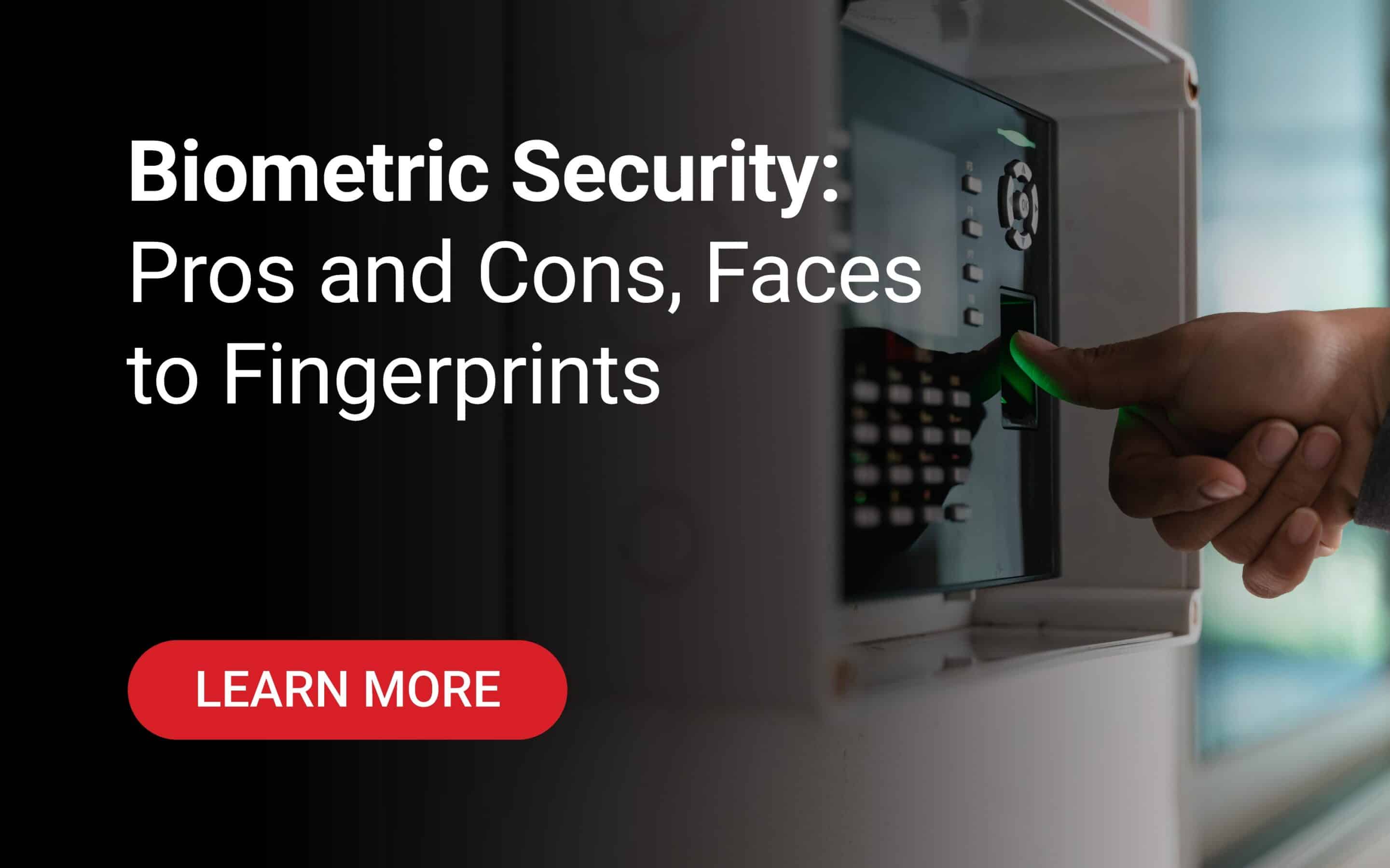Is biometric security worth the investment? Here’s what to know before making the switch.
Understanding Biometric Security Pros and Cons
Today’s access control systems are smarter than ever, and biometric authentication is leading the charge. From facial scans to fingerprints, this once-rare technology is becoming accessible on all levels of business, promising seamless, secure entry without the need for unwieldy badges or PINs. Impressive as the benefits are, however, biometric access comes with its own distinct use cases and trade-offs.
For many businesses, the question isn’t “can we use biometric security”—it’s “should we.” If you’re weighing your options, PEAK Alarm is here to help—and you can contact us anytime to learn more.
In the meantime, let’s break down some of the most important biometric security pros and cons—and how you can leverage them to make the most of your access control.
Biometrics Are on the Rise—But Why?
Touchless, efficient, and virtually impossible to duplicate, biometric access systems are redefining what high-security access control looks like for secure environments. Once seen only in futuristic cinema, today’s options include:
- Facial recognition
- Fingerprint scanning
- Iris and retina scans
- Voice authentication
- Palm vein patterns
Some of these are tried-and-true, while others are from the cutting-edge of security innovation. And, as is the case with all forms of biometric security, pros and cons come with each. In most cases, however, these identifiers are measurably faster and more secure than methods like keycards and PIN codes. But are they the right fit for you?
Biometric Security Pros and Cons: What You Should Know
Making your decision starts with understanding the factors that will contribute to the success of your system. Here’s what you should keep in mind when looking into biometric security:
The Pros of Biometric Security:
1. Enhanced Security
The most basic fact is this: biometrics are extremely difficult to fake, making them a highly secure alternative to other access control methods. Unlike keycards that can be lost or codes that can be shared, your fingerprints and face are uniquely yours. This has made biometric systems a top contender for high-security environments.
2. Contactless Entry
Facial and iris recognition offer completely touch-free authentication, which can be ideal for healthcare, clean rooms, or any setting where workplace hygiene is a top priority. With increased concern about surface contact, contactless security is in higher demand than ever.
3. No More Lost Credentials
Say goodbye to lost badges and forgotten codes. Since your body goes with you everywhere, biometric systems eliminate the hassle of managing physical credentials or resetting PIN codes every few months.
4. Faster Authentication
With the right setup, biometric authentication can be lightning fast—getting employees or residents through doors with minimal delay. No searching for the right key, no typing in extended sequences of numbers.
5. Activity Logging
As one of the more advanced forms of access control, biometrics are compatible with a variety of features and integrations. Many systems pair with automated access logs to track who entered and when, which gives your team clear documentation for security audits or investigations.
The Cons of Biometric Security:
1. Privacy Concerns
Biometric data is deeply personal, and storing it comes with a certain level of responsibility. If not properly encrypted and protected, it could be a target for hackers or misuse—so compliance with privacy regulations is essential.
2. Cost Considerations
While prices are dropping, biometric systems may still cost more upfront than more traditional access methods. Factors include hardware, software, and ongoing management. Budgetary considerations accounted for, even a single prevented security incident could be well worth the upfront cost.
3. Difficult to Replace
The fact that biometrics cannot be easily copied has the theoretical potential to become a double-edged sword—you can replace a keycard, but you can’t replace your face. If biometric data is somehow compromised, however unlikely, navigating the ramifications can be more challenging than the more easy-come-easy-go methods.
Best Use Cases for Biometric Access Control
There are a wide variety of applications for biometric access control, from financial institutions to healthcare facilities. Even among operations in the same industry, the distinct use cases can be very different. What most of them have in common, however, is a heightened level of security needs. Generally speaking, biometric systems work best when:
- Security must be extremely tight (e.g., server rooms, medical records, financial data)
- There’s a need to reduce physical touchpoints for hygiene or accessibility
- Credential sharing (as with PINS, cards, or keys) is a frequent risk
- Audit trails and real-time monitoring are critical for compliance
- There’s high staff or tenant turnover, causing a risk of outdated credential use
In these scenarios, biometrics can do more than secure the building—they can also streamline everyday operations and assist in maintaining compliance requirements. While there are dozens of potential biometric security pros and cons to consider, situations like these can almost always see substantial benefit from an installation.
How PEAK Alarm Helps You Navigate Smart Security Upgrades
At PEAK Alarm, we don’t believe in one-size-fits-all systems. That’s why we start with a consultative conversation—learning what you need to protect, how your people work, and where the right technology can make a difference.
If biometric access control makes sense for your location, we’ll help you:
- Identify the best biometric modality for your team
- Ensure privacy compliance and data protection
- Integrate biometrics with your existing access, video, and alarm systems
- Train your team and build in redundancy for fail-safe operation
Whether you’re upgrading one facility or overseeing multiple high-security locations, our team delivers reliable, future-ready access control across the Mountain West. If you’re ready to explore whether facial recognition or fingerprint scanning belongs in your security plan, PEAK Alarm is here to guide the way.
Protect what matters most to you. Contact PEAK Alarm today.

